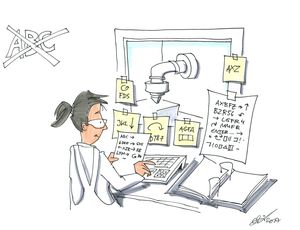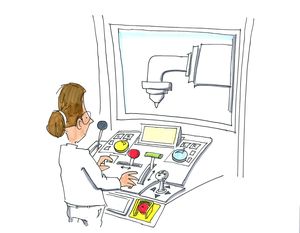KANBrief 3/18


In 2018, the layout of the KAN Praxis ergonomics lecture modules was given a fresh coat of paint, and almost all images were replaced. The new illustrations are from caricaturist Michael Hüter, who has now also presented certain aspects of ergonomics in cartoon form. The first version of the ergonomics lecture modules appeared in 2008 as the outcome of a KAN study. Since then, the modules have been continually extended and revised.
Eight modules with over 500 slides, videos and exercises communicate the principles of ergonomics and consider a range of specialist topics in further detail. Numerous examples can be used to impart the knowledge illustratively or to work through it in independent study. Supplementary test questions with model answers are available for teaching staff.
Have you already heard of ergonomics? If not, Module 0, Introduction for beginners, is the right module for you. It provides a concise introduction to ergonomics with reference to examples. Module 1, Introduction to ergonomics, describes the basic concepts of ergonomics. Your existing basic knowledge is extended by explanations of the benefits of ergonomics, the options available to designers, and the statutory principles.
Specialist content is imparted with the following modules, beginning with Module 2, Anthropometric and biomechanical aspects of ergonomic design. What do you need to know about human body dimensions, and what do these dimensions mean for the design of products? What forces does a person possess by which he or she can move a control element on a machine?
Module 3 concerns climate, light, radiation and other external influences at work. These influences are explained in detail, and you learn how to develop strategies to limit stresses and exposure. You also become familiar with the human factors stress/strain model.
How do human beings and machines work together? How do displays and controls need to be designed in consideration of ergonomic aspects? Answers to these questions can be found in Module 4 concerning the human-machine interface.
Module 5 acquaints you with different user groups and their respective ergonomic needs. You also learn how to evaluate and design work systems from an ergonomic perspective. A comprehensive collection of examples provides a wealth of illustrative material by which you can extend the depth of the tuition content.
How can the ergonomics of company processes be optimized? In what way do technical, organizational and social aspects influence each other? These questions, together with basic concepts of company organization, organizational development and means of process optimization, are discussed in Module 6, process ergonomics.
Finally, Module 7, Ergonomics of medical devices, provides an introduction to the fitness for purpose and usability of such devices. This module familiarizes you with the effects of the ergonomic design of medical devices upon patient safety.
Register and download all modules free of charge.
Katharina von Rymon Lipinski
vonrymonlipinski@kan.de